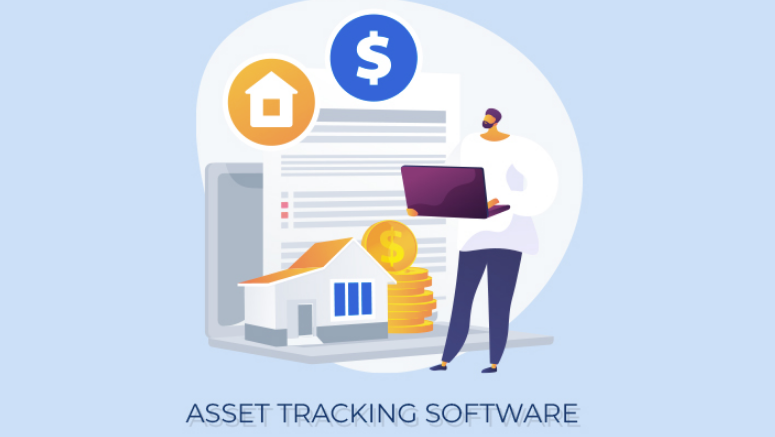We all briefly know that asset tracking software tracks the movement of IT hardware, tools, and software within an IT environment. It can trace the location of each asset and gives an inventory of all the technology that goes into an IT environment or infrastructure.
Network, system, and IT administrators utilize asset tracking software to keep a quantitative inventory of and physically monitor all IT assets. This resolves many Asset management challenges.
The asset tracking software can create an organization-wide IT inventory by scanning the IT infrastructure for IT assets.
Duties Carried Out By Asset Tracking Software
1. Computer inventory control
2. Managing hardware inventory
3. Inventory control on a network
4. Management of vendor contracts and software licensing
Working of Asset Tracking Software
The asset tracking system that a software company will make for you consists of two parts. A piece of software exists that can use data from the tracking device to tell the user where the assets are.
The software may be a standalone program or a component of another application.
The type of assets being tracked and the tracking mechanism chosen will determine how it functions. Usually, the GPS installed in the vehicle and the GPS in the drivers' mobile phones can be used to track moving objects. Such data will be examined by the backend and sent to the application's user end.
An asset management system automatically updates to reflect asset recovery. Using the best enterprise asset management software, companies can ensure accurate tracking and timely updates of asset statuses, helping to maintain precise records. Assets will be deleted from the company's records and books once sold or scrapped. Related assets like consumables and spare components are written off or sold to free up storage space, further optimizing asset utilization and storage management.
Advancements In Asset Management Software
The asset monitoring system's hardware consists of several tracking tools, such as barcodes, RFID tags, GPS trackers, and QR codes, to meet all kinds of complex Asset management challenges. These can interact with the program when attached to the object that needs to be tracked.
Either directly or using a scanning instrument will be used to do this. Scanners are used to follow barcodes. The scanner will send the asset's location each time it is utilized. Choosing the suitable tracking device for each asset is necessary to provide the software with the correct data.
Depending on where it is utilized, it can be integrated into the supply chain management or resource planning software. The software development company will design and suggest according to your company's needs. The ERP software can be connected with production-related assets.
Need For a Dedicated Asset Tracking Application
A platform for automated asset tracking might be helpful for any company that has accumulated valuable assets.
Lower Administrative Expenses
Companies must rely on administrative employees to know the status of each physical object in the absence of a dedicated asset monitoring system. That method is substantially more expensive and leaves space for human error, which could result in the loss of priceless goods.
These employees may concentrate on more mission-critical activities thanks to automation.
1. Enhanced Customer Service
You can better serve your clients by increasing your capacity for tracking assets. Improved inventory availability, effective operations, and staff that can accurately respond to inquiries regarding asset status are all benefits of improved asset monitoring.
For instance, if a large construction company knows when all the necessary equipment will be ready, they may give more precise project start times.
2. Increased Adherence to Regulations
From one industry to the next, regulations differ. Asset tracking and record keeping are nevertheless sometimes necessary. Businesses that use potentially hazardous equipment must, for instance, keep meticulous records of the equipment's condition, its maintenance history, and any associated accidents.
3. Enhanced Accountability and Decreased Costs
The lack of a centralized method for tracking your assets increases the likelihood of improper asset use and careless handling. You can always know where each purchase is, what condition it's in, and which person or department is now looking after it if you keep close track of your help. This responsibility ultimately decreases costs, and you have the assurance that your assets are operating effectively.
4. Efficiency
Asset tracking provides all businesses with predictability and insights. Your team can make data-driven decisions about your most important assets by keeping track of asset maintenance, related expenses and downtime, location, and more. These can involve determining when to repair versus replace an asset or anticipating when an asset will fail.
Your assets can operate more effectively when they are correctly maintained and replaced. Reduced expenses and time savings result from this.
Types of Assets That Can Be Tracked
You can utilize asset tracking systems to gather and preserve information on any valuable asset your company possesses. This information includes upkeep logs, asset usage, geographic location, and related expenses and downtime.
Tangible Assets
A tangible asset can be touched or seen in person. You may have tangible assets such as real estate, buildings, machinery, inventories, money, stocks, bonds, etc.
Financial Assets
An asset with a value based on a contract is referred to as a financial asset. Cash, bonds, stocks, and derivatives are a few of the best illustrations of financial assets. Tracking software may regulate the influx and outflow of the same, making it simple to stay on top of the finances.
Fixed Assets
Long-lasting fixed assets cannot be transformed into cash, consumed, or expended in any other way shortly. Your equipment, fleet, buildings, and other items are some examples of fixed assets, called tangible assets.
Asset management software can be very useful when it comes to fixed assets like inventory, machinery, and other equipment items. The program can assist you in keeping track of these assets' locations, maintenance plans, repair requirements, and much more.
Intangible Assets
Intangible assets are assets without a physical presence, such as goodwill and patents. However, in terms of tracking, this group might also encompass controlling software licenses, data management, etc.
The assets you need to track are listed below.
1. Construction Equipment
2. Fleet vehicles
3. Machinery and manufacturing equipment
4. Office Supplies
5. Computer hardware and peripherals
6. Furnishings
7. Signage
8. Medical equipment
9. Safety equipment
10. Appliances
11. Tools
12. Construction supplies
13. Cabling
Why Do We Need Improved Asset Management?
Almost every company has valuable assets. They may improve client experiences, guarantee assets retain value, optimize processes, and make knowledgeable business decisions by implementing a flexible asset monitoring system.
Businesses must keep track of their assets since doing so can help them save time and money. Asset management optimizes a company's assets to give stakeholders the best returns possible. It frequently includes asset recovery as well.
The disadvantages of earlier monitoring systems, such as relying on inaccurate data and needing a way to know where assets are or how they operate, are eliminated by tracking the assets, such as fixed assets, with asset tracking software. Additionally, asset management gives firms a 360-degree perspective of the whole asset life cycle.
Software for asset management also automatically conserves time and resources. Additionally, improved scheduling and automated warnings cut capital expenses and maintenance costs.
As a result, overall operational costs drop while planning effectiveness rises.
A system like this makes establishing a risk management approach easier and improves regulatory adherence. Depreciation rates and asset valuation are also more accurately calculated.
Challenges of Asset Management
1. Choosing the right assets: The organizational infrastructure usually needs to be discovered by corporate executives. In these circumstances, choosing what assets to buy becomes more difficult.
2. Uncontrolled asset acquisition: A traditional procurement-focused asset strategy is frequently to blame for adding more uncontrolled assets to the business. These assets, which are used within a corporation without the permission of the IT department, are known in IT as "shadow assets."
3. Cross-functional Assets: Asset management across all business units presents a significant challenge for effective operations. The issue is that numerous company units frequently borrow or share assets, which raises the danger of business disruption when several units require an item but are already used by one of them.
It is preferable for businesses with a significant asset base to create custom software so that you can integrate every unique aspect of your assets and guarantee proper management. With these asset management systems, you can be confident that your business will always comply with the law if you work in a regulated area.
Inventory management is where asset tracking systems from custom software development firms are most helpful. This is especially true for merchandise that needs to be stored under specific circumstances, such as a certain temperature. They provide accurate tracking and guarantee that the asset remains undamaged.
The assets could be tough to track if they are delivered to the incorrect location. And the software aids in tracking and returning items that were dispatched incorrectly.
Asset management enables a company to comprehend the capabilities of its assets and how to utilize them to their fullest potential. It results in more effective operation. Using asset management software to control inventories significantly reduces losses from improper material deployment.

















Post Comments